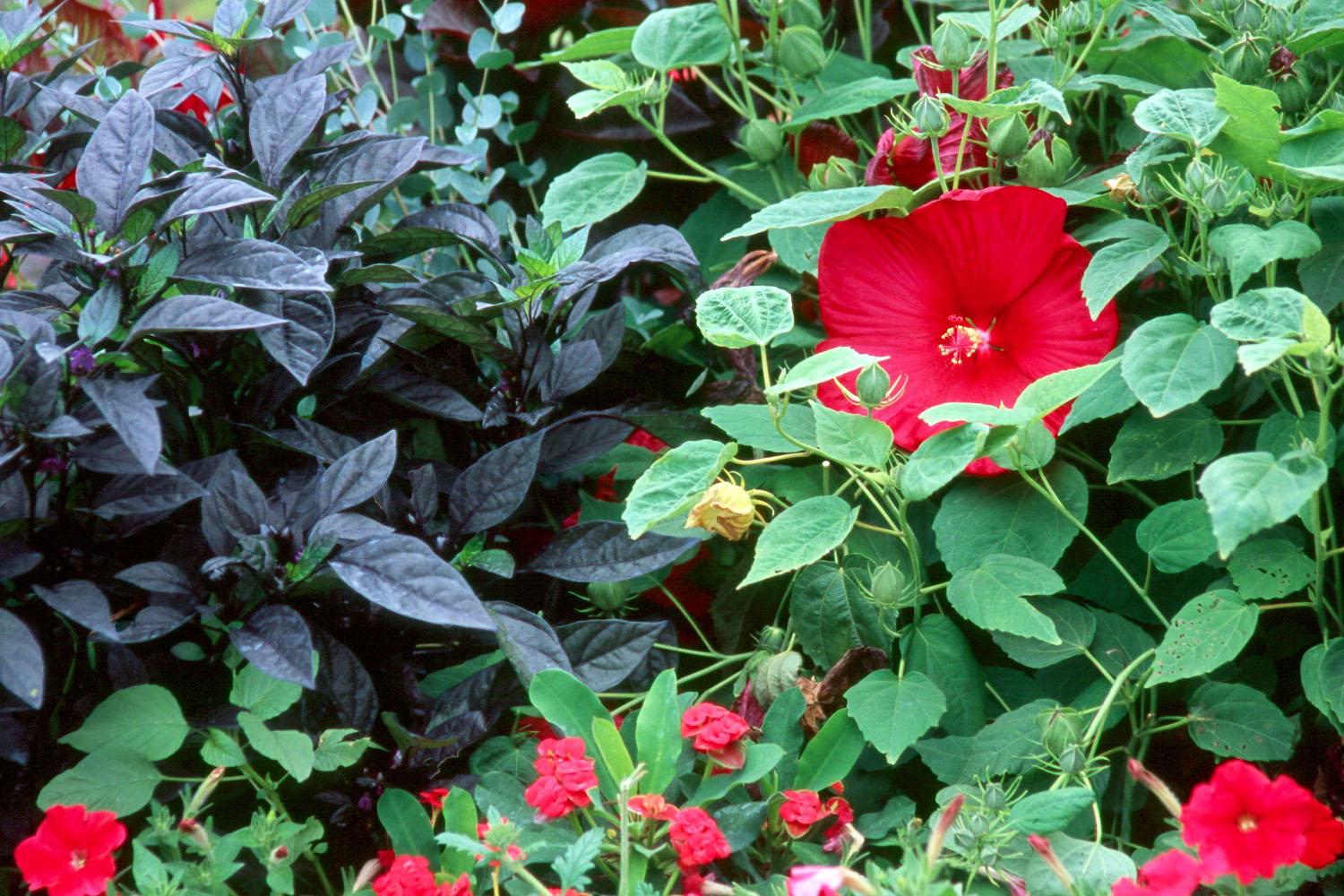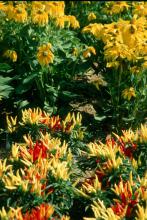Information Possibly Outdated
The information presented on this page was originally released on September 15, 2005. It may not be outdated, but please search our site for more current information. If you plan to quote or reference this information in a publication, please check with the Extension specialist or author before proceeding.
Ornamental peppers enliven fall landscapes
By Norman Winter
MSU Horticulturist
Central Mississippi Research & Extension Center
Mississippi's second planting season is here, bringing many choices to liven up tired landscapes. There are mums and marigolds, salvias of all sorts, late season zinnias and one of my favorites, the ornamental pepper.
Ornamental peppers have changed dramatically over the last few years to become real landscape assets. We now have choices like the colorful, Medusa, Chilly Chili, Masquerade and a new one called Black Pearl that will steal your heart for sure.
Black Pearl is an All America Selections Winner for next year, but you may just get lucky enough to find it this fall. Whenever you see it for sale, grab at least half a dozen.
This pepper will reach at least 18 to 24 inches tall with a whole seasons of growth, and will spread 12 to 16 inches. It contributes to the landscape much like the Purple Knight Alternanthera, although it is not quite as tall.
Black Pearl produces semi-glossy, deep purple-black leaves that contrast nicely with yellow marigolds or lantanas, pink verbenas, hibiscus or salvias, and whites petunias.
The foliage is enough to warrant growing the pepper, but of course that isn't all. The plants produce scores of shiny, round, black, pearl-like peppers that seem to always glisten in the garden. As the peppers mature, they turn a bright, cheerful red. These peppers are edible but are fiery hot, so be warned. Use them in moderation in a pot of red beans.
Whether you grow Black Pearl or one of the other great choices, select a site in full sun with fertile, well-drained soil. Space the plants about 12 to 14 inches apart for landscape applications, and wider when growing for harvest.
Before removing the peppers from their container, dig the holes in the garden soil. Gardeners know they can plant a tomato deeper than it grew in the container, but you must plant the pepper at the same depth it is presently growing.
Feed your peppers with a complete garden fertilizer, preferably one that is higher in phosphorous such as a 10-20-10. Apply two tablespoons per plant at three- to four-week intervals. Dilute, water-soluble fertilizer can be used every other week if preferred or if growing in a container.
Keep your plants watered and mulched through the long growing season, and they will give you an unfailing performance.
Try the 2002 All America Selections winner Chilly Chili that produces chartreuse, orange and red peppers all at the same time. These do not have a hot flavor. Medusa's peppers change from ivory to orange and crimson as they mature. Explosive Ignite has ivory, green and orange fruit.
In addition to Black Pearl, there are other purple-leafed forms to try such as Explosive Ember, Black Prince and Royal Black.
If the high winds of Katrina did your landscape no favors, get out now and start you fall planting a little early. In my opinion, peppers should play a vital role in this fall's gardens.









